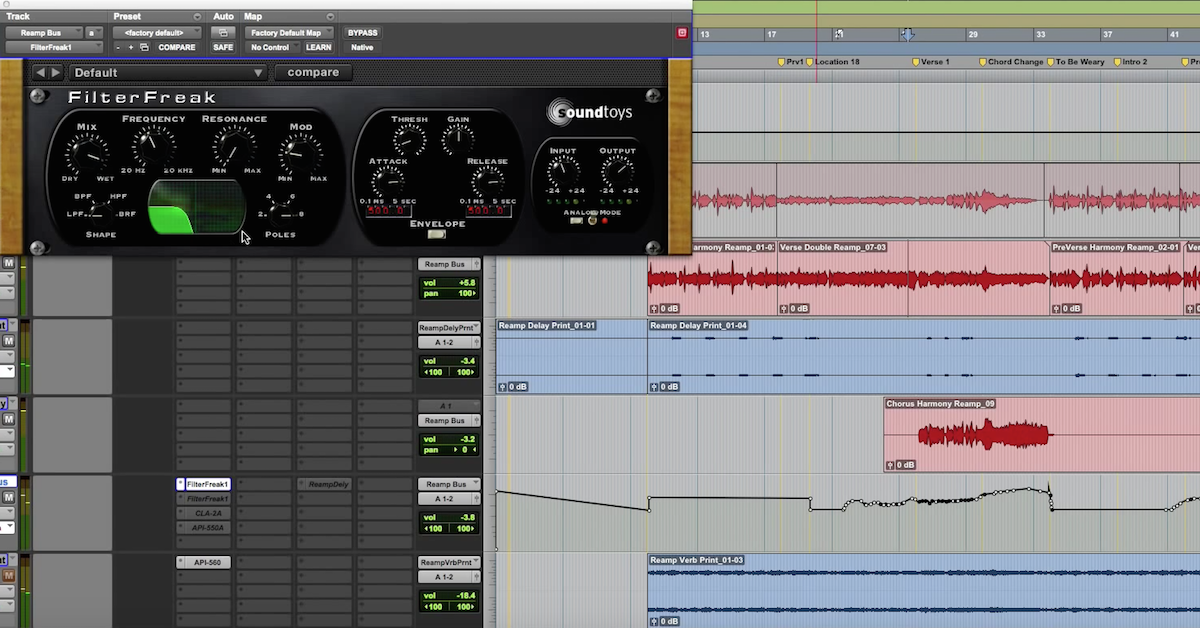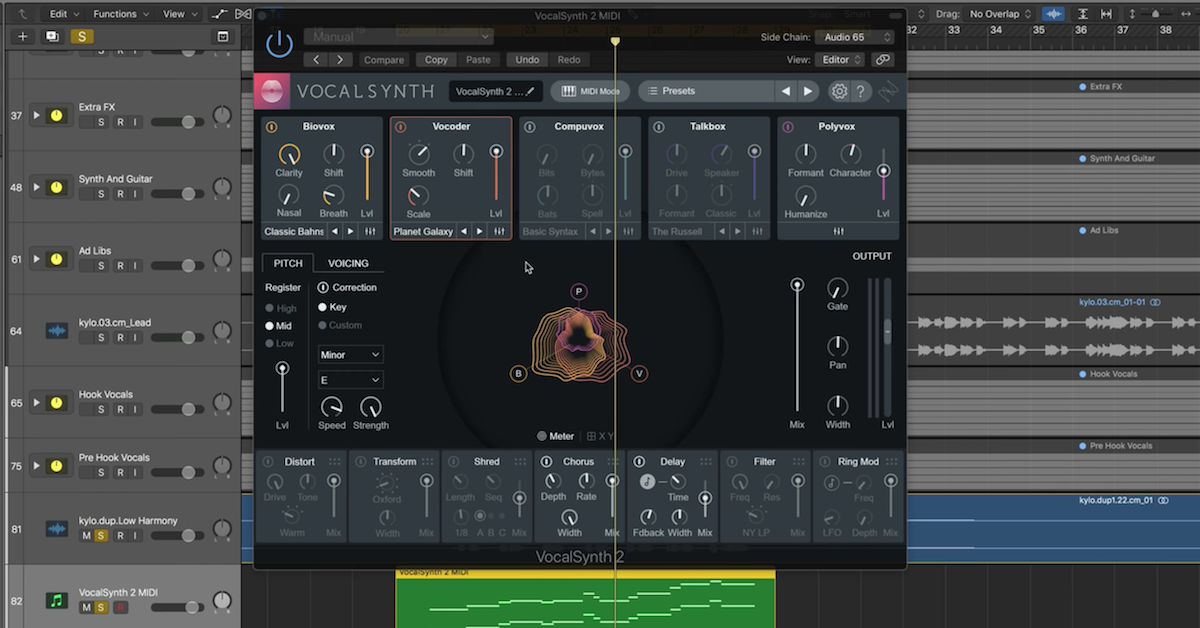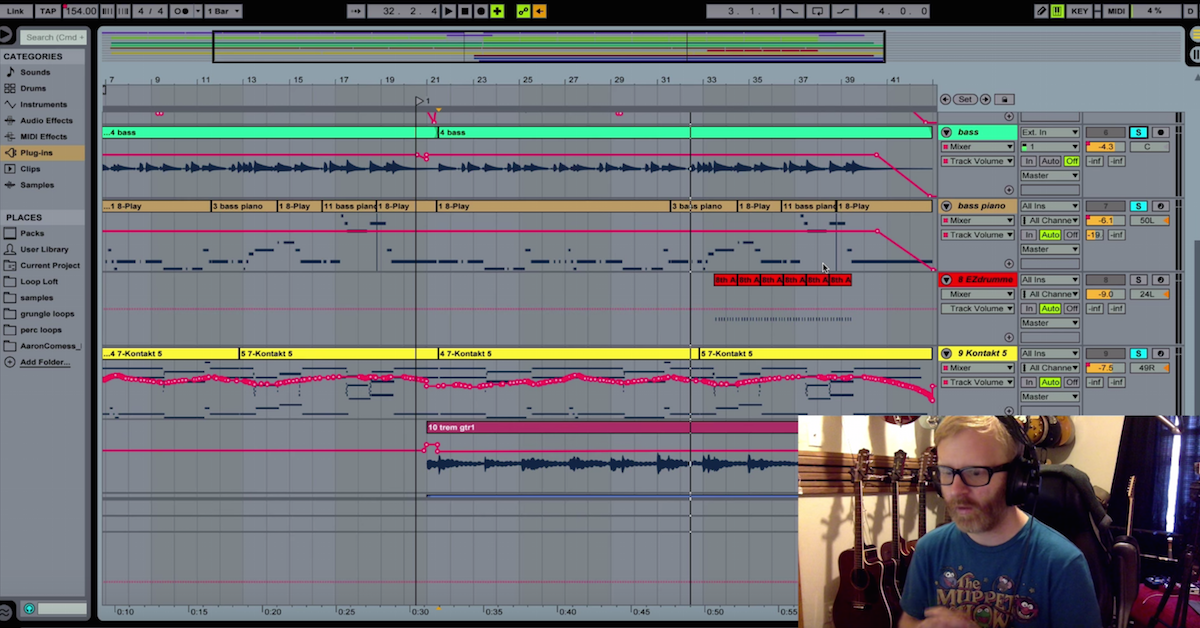4 Overused Instrumental Production Techniques (That Aren’t as Cool as You Think)
Article Content
I recently wrote an article about overused vocal production techniques. I originally wanted to write one article about overused techniques in general, but there was just too much to say about vocals! There were a few vocal production clichés I wanted to include that didn’t make the cut, but there was one common thread connecting all the examples I gave: there are no magic bullets in music production. “Saving” a bad performance with processing is pretty hard to do, and no one trick is going to be able to take the place of a really compelling vocal track.
Some of the instrumental techniques in this article suffer from the same problem: being obvious attempts at breathing life into a song that just doesn’t feel exciting. Others are cool tricks that can sometimes create problems in a mix, and more novice producers might find themselves doing more harm than good when they employ them. If your favorite production move turns up on this list, don’t take it personally! All of these techniques can be and have been done well — that just means the bar has been raised for anybody who still wants to use them.
1. Filtering a Section and then “Opening Up”
We’ve all heard this one — a song becomes artificially “small” by applying heavy filters before exploding into a more full section, usually a chorus. It’s a move that had long been in use in electronic music before making its way into the pop lexicon as electronic music became more of an influence on music production in general. There are tons of examples of this effect out there, and there are quite a few in Daft Punk’s catalog:
Why It’s Cool:
Rather than relying on melody and the natural expressive qualities of performance, electronic music tends to use changes in texture and timbre to create a dramatic arc within a song. Using filters to “shrink” the scope of a production brings the listener into a new sonic landscape, and forces them to lean in and pay attention. Having a filtered section then explode into a fuller one enhances the feeling of excitement as that chorus drops.
Why It’s Not That Cool:
Electronic music production has been influencing mainstream music for a very long time at this point. When Daft Punk used this technique in 2001, a large part of their audience may have legitimately not heard anything like it before. In 2019, I doubt that’s still the case. When an arrangement becomes filtered or suddenly smaller in the middle of a song, you can see that next drop coming from a mile away.
Modern production is not known for having especially natural dynamics, and tricks like this are an effective way to create a sense of dynamics without really having loud and soft sections in a song. In the current production landscape, a song that is totally slammed except in a couple of filtered sections stands out less than one that manages to create more organic dynamic changes.
2. Crushed Drum Room Mics
The sound of room mics being destroyed in a compressor is arguably the default for rock drums. If you aren’t familiar with the particulars of this technique, it’s pretty simple: place mics somewhere far from the drum kit that captures a natural, powerful sound in the room, and then aggressively compress those tracks. An 1176 compressor in its “all buttons in” setting is a classic choice for this effect, but lots of compressors are up to the task. An early and definitive example of this effect can be heard in Led Zeppelin’s “When The Levee Breaks”.
Why It’s Cool:
Miking and processing drums like this can produce a huge, aggressive sound. It’s arguably more organic sounding than close mics alone: we aren’t used to hearing every drum in a kit from three inches away, and drums sound most naturally powerful when interacting with the space they are in. Compression brings out the sustain of the kit and adds harmonic distortion, potentially leading to a robust, larger-than-life drum sound.
Why It’s Not That Cool:
Destroying room mics can work wonders for drum tone, but it’s an easy technique to screw up. Finding the right mic placement for this kind of sound can be difficult, and some rooms make it harder than others. On top of that, using this technique to record a drummer who bashes their cymbals can lead to a drum track that is overwhelmed by harsh, pumpy cymbals, obscuring the shells altogether. Like so many production tricks, crushing drum mics is a great way to enhance the sound of a killer performance, but a pretty bad way to try to save a bad drum take.
3. 808 Kicks
Though Roland’s TR-808 got off to a shaky start when it was first released in 1980, it has since claimed its place in music production, appearing on more hits than any other drum machine. The sound of the 808’s kick is especially iconic — thick, booming, and sustained. If you own any music production software, you almost definitely have 808 kick samples on your hard drive, whether you know it or not. 808 kicks have been used to bring their signature low-end power to Hip-Hop songs practically since the birth of the genre, and it’s entirely possible that they are only more popular now. For a great example of 808 kicks, just take a listen to the car with rattling windows sitting next to you in traffic. Or, hell, here’s a Drake song:
Why It’s Cool:
Roland originally marketed the 808 as a replacement for a live drummer, and like its bass counterpart, the TB-303, it flopped initially when musicians heard its unnatural sound. It turned out the 808 and 303 were just ugly ducklings, though, and early Hip-Hop and electronic producers gravitated towards them precisely because of that unnatural sound (it didn’t hurt that they were dirt cheap as used machines for a long time). The 808’s signature sine tone kick plunges into the depths of sub-bass like no other, and it takes especially well to heavy saturation. When you want low end you can feel, it’s hard to beat an 808.
Why it’s Not That Cool:
Big boomy 808 kicks really work best when they have a lot of room to breathe. In “Marvin’s Room,” the 808s are kind of the beginning and end of the story with regard to low end. Though there is another sample playing a busier kick pattern, it doesn’t have even close to the same amount of low end as the deeper kick. Making big 808 kicks work in a song where they’re sharing frequency real estate with less boomy kicks or another bass instrument can be tricky.
Dialing in the low end just right is one of the biggest challenges in production, and it gets especially hard when working on a sub-optimal monitor setup as you might find in many home studios. Giant 808s can make the vibe of a track, but if they’re an afterthought, they’re much more likely to make a mess.
4. Reverse Cymbal Swells
The rise of drum machines and samplers made reversing sounds easier than it had ever been before, and in a DAW, reversing sounds is only easier. You can hear reversed cymbal swells throughout The Weeknd’s “Can’t Feel My Face,” used in both subtle and obvious ways to build momentum between and within sections:
Why It’s Cool:
Recording sound on tape opened up new ways to sculpt sounds by manipulating the way the tape played back. When experimental composers started playing with the possibilities of tape in the mid-20th century, reversing sounds by playing tape backward opened up a world of freaky new sonic discoveries. Sounds take on a new life when you reverse them, and it’s obvious why any music maker would want to broaden their tonal palette. As music production has become increasingly digital, manipulating sounds has only become easier. In the context of the example above, the reverse cymbal swell is used as a way to build momentum into a change between sections, and it does that very effectively.
Why It’s Not That Cool:
This trick has just been used so many times that it has become incredibly predictable. Especially in a tightly quantized, beat-driven song, you can hear that next drop coming from a mile away when that reverse cymbal swell starts. The Weeknd song above uses reversed cymbals in some pretty subtle ways, but there are many more examples out there of this technique being used heavy-handedly. The whole point of the reverse swell is to build anticipation and excitement, but a predictable big cymbal swell into a chorus can be pretty boring.
Conclusion
The instruments and gear that we use to make music will invariably inform the way we make that music and the way the end result sounds. Technological changes go hand in hand with stylistic changes — as it becomes easier to do something, more and more people start doing it, and inevitably some people find ways to do it really effectively. The more refined those techniques become, it becomes harder to do them in a way that still sounds exciting, and easier to do them in a way that sounds like we’re just following a trend.
If you find yourself reaching for some signature production move just because it’s a standard thing to do, try shaking things up instead. You might end up finding something unique and legitimately exciting in a moment that would otherwise be kind of boring and.
Did I miss anything? Let me know what production fads get under your skin in the comments!









